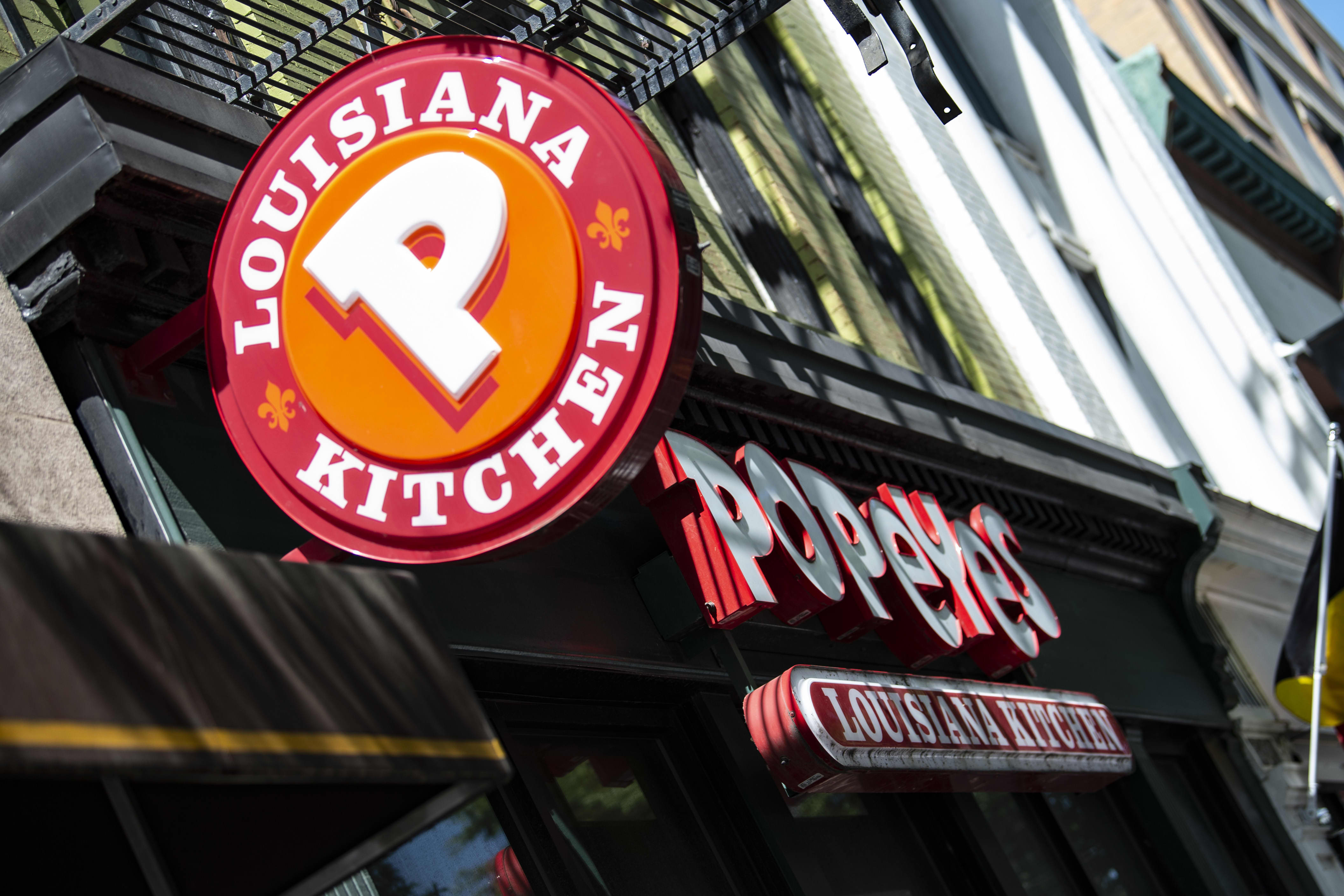A Popeyes fast food chain restaurant is seen on August 30, 2019 on a street of Washington D.C. – Chick it out! US restaurant chain Popeyes launched a fried chicken sandwich which became such a social media sensation, the company has run out of stock nationwide, leaving would-be consumers crying fowl. On August 12, Popeyes unveiled its latest offering: a deep fried chicken breast on a brioche roll, with spicy mayonnaise and pickle slices. The fried chicken chain said they would let customers know when sandwiches are back. (Photo by Eric BARADAT / AFP) (Photo credit should read ERIC BARADAT/AFP via Getty Images)
ERIC BARADAT
Even in the midst of a global pandemic, consumers still want Popeyes Louisiana Kitchen’s chicken sandwich.
The chain’s parent company Restaurant Brands International said Thursday that Popeyes’ U.S. same-store sales soared more than 40%, as of the third full week of May.
The latest results are an improvement from the second half of March, when Popeyes’ same-store sales were flat compared to the year-ago period. Fast-food restaurants are recovering more quickly than the rest of the restaurant industry and even reporting same-store sales growth, according to industry tracker Black Box Intelligence.
Ever since Popeyes released its chicken sandwich in August, the chain has reported same-store sales growth that far outpaces its competition. For example, its U.S. same-store sales climbed 29.2% during the first three months of 2020.
Others have tried to replicate its success. Yum Brands’ KFC announced on Tuesday that it would test a revamped version of its chicken sandwich.
Restaurant Brands’ other two chains have also seen sales rebound in recent weeks, although same-store sales in their respective domestic markets remain negative.
Tim Hortons’ Canadian same-store sales declined by mid-twenties, as of the third full week of May. The coffee chain’s same-store sales plummeted more than 40% in the second half of March.
Burger King’s U.S. same-store sales shrank by mid-single digits in the same period, bouncing back from same-store sales declines of more than 30% in late March.
“All three of our brands have benefitted from guests who have increased their usage of our thousands of drive-thrus across North America as a safe, quick and convenient option to feed themselves and their families,” CEO Jose Cil said in a statement.
Restaurant Brands does not include locations that are closed for a “significant portion of a month” in its monthly same-store sales calculations.
“Substantially all” restaurant locations in its home markets are open, but some international markets have experienced significant restaurant closures. In Latin America, for example, half of its locations are temporarily closed.
Shares of Restaurant Brands rose less than 1% in premarket trading. The stock, which has a market value of $25.6 billion, has fallen 12% so far in 2020.
